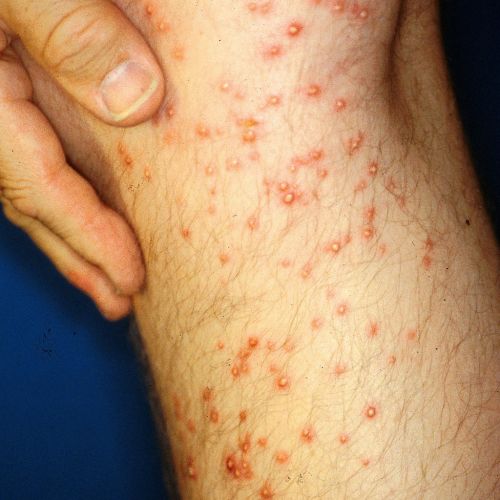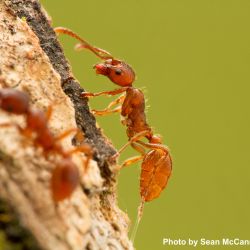
Priority: Prevent
General: Red ant that is invasive that not only bites but also stings. They have underground nests with no visible mound.
Size: Workers are between 4-5 mm long and queens are slightly larger, up to 9mm. Generally, they are small and thin.
Colour: Reddish-brown.
Other Key Features: It has a constricted waist with 2 segments. The middle body section has 2 backward-pointing spines. Refer to Metro Vancouver BMP document in References for a drawing with these body parts.
BC native red ants species.
Differences: Native ants also have constricted waists but only have one segment. REPORT all suspected species because it can be hard to distinguish between the native ants and European Fire Ant.
Where did it come from? Native to Europe and Asia. First introduced to Eastern North America in the 1900’s. It was first found in BC in 2010.
Where does it live here? It is present in BC. It prefers moist environments but infestations can occur in dry ecosystems as well. Infestations are found in the lower mainland, Fraser Valley, Vancouver Island and Naramata. Colonies live in underground nests. They can be found in lawns, raised beds and other areas with moisture and warmth. This can include under paving stones, wood on the ground and yard waste piles.
Reproduction: Colonies usually contain a few thousand workers and add a few to several hundred new ants per year.
When does it reproduce & mature? The life cycle is still being studied. There are multiple queens per colony and many nests as well. Queens will live over a winter before laying eggs for the first time. In the spring, the queens start reproduction. It is reported that it takes at least 2 years for a queen to start a colony. Young can either develop in the year that it is laid or also spend a winter in a larvae stage and mature the next year (University of Florida reference has more detailed information).
Spreads By: Queens will leave a parent colony and establish a new one in a process called budding. A group of workers will go with her to the new nest. Humans play a key role in moving the ants to new places. Nexts or parts of nests can be moved in garden and landscaping materials like potted plants, soil, compost, tree balls and mulch.
Species Type: Insect, Land.
- European Fire Ants can bite and sting. They swarm when their nest is disturbed. There have been cases of allergic reactions to the sting.
- Infestations have caused backyards, gardens and commercial areas to be completely unusable. There can be up to 4 nests in one square meter. This demonstrates that colonies can be very dense.
- European Fire Ant colonies can displace other native ants.
- REPORT all sightings. If you think you have European Fire Ants on your property, you need to confirm their identity. Contact LRISS. There are free identification services.
- Collect a Sample for identification. Dr. Robert Higgins at Thompson Rivers University provides instructions here on how to collect a sample for identification.
- Check all plants and soil for invasive hitchhikers especially insects. Tapping a potted plant to see if any insects emerge is one method of checking.
- Avoid or remove objects from your yard that could be a good home for the ants. This includes objects that attract heat and moisture such as paving stones, debris piles and wood piles. Reduce watering of your property.
Contact LRISS for specific recommendations.
Okanagan Invasive Species Online
Metro Vancouver and the Invasive Species Council of Metro Vancouver. Best Management Practices for European Fire Ants in the Metro Vancouver Region. March 2019.
Sea to Sky Invasive Species Council. European Fire Ant Fact sheet. May 2016. Collaboration with LRISS.
Photo Gallery

